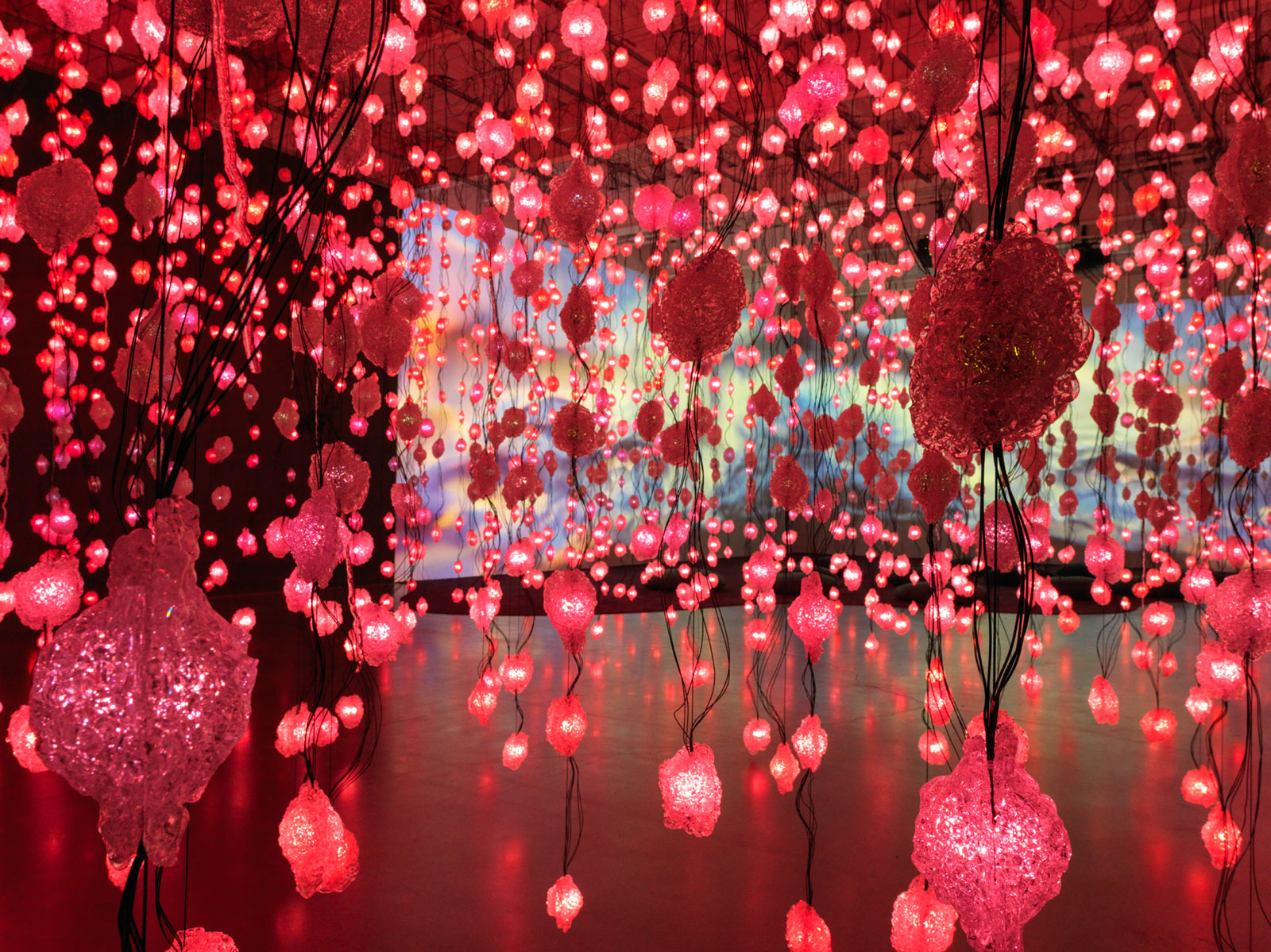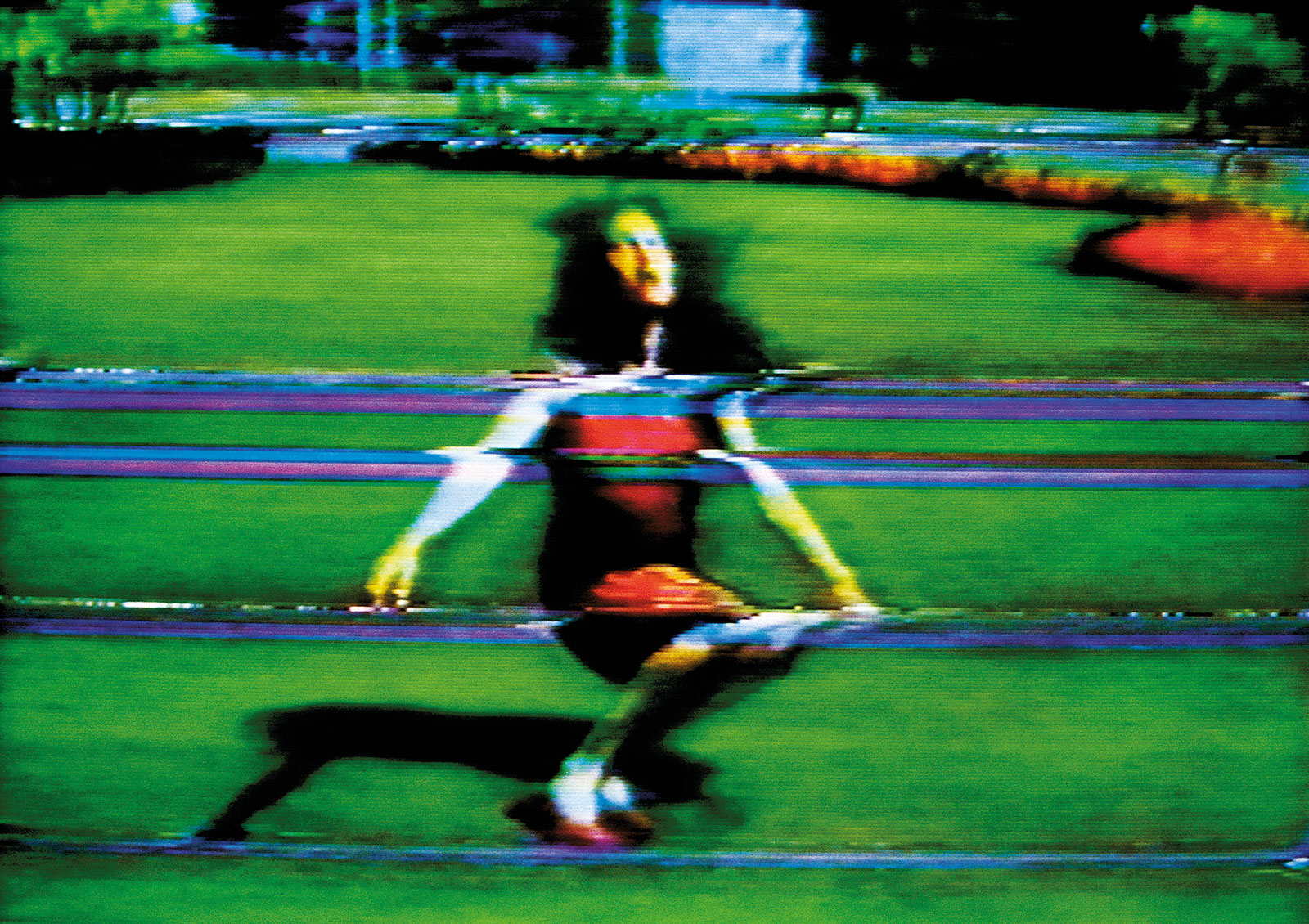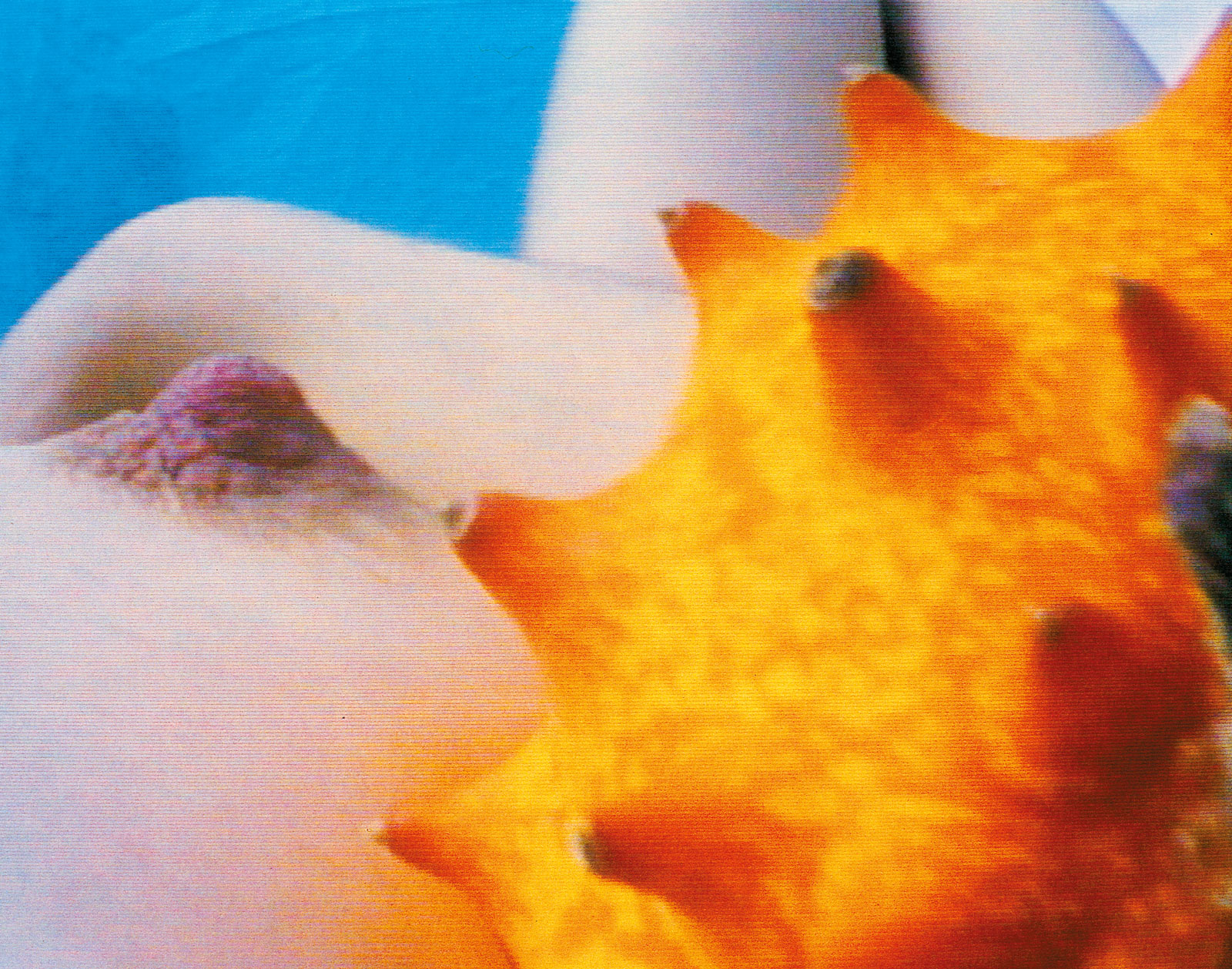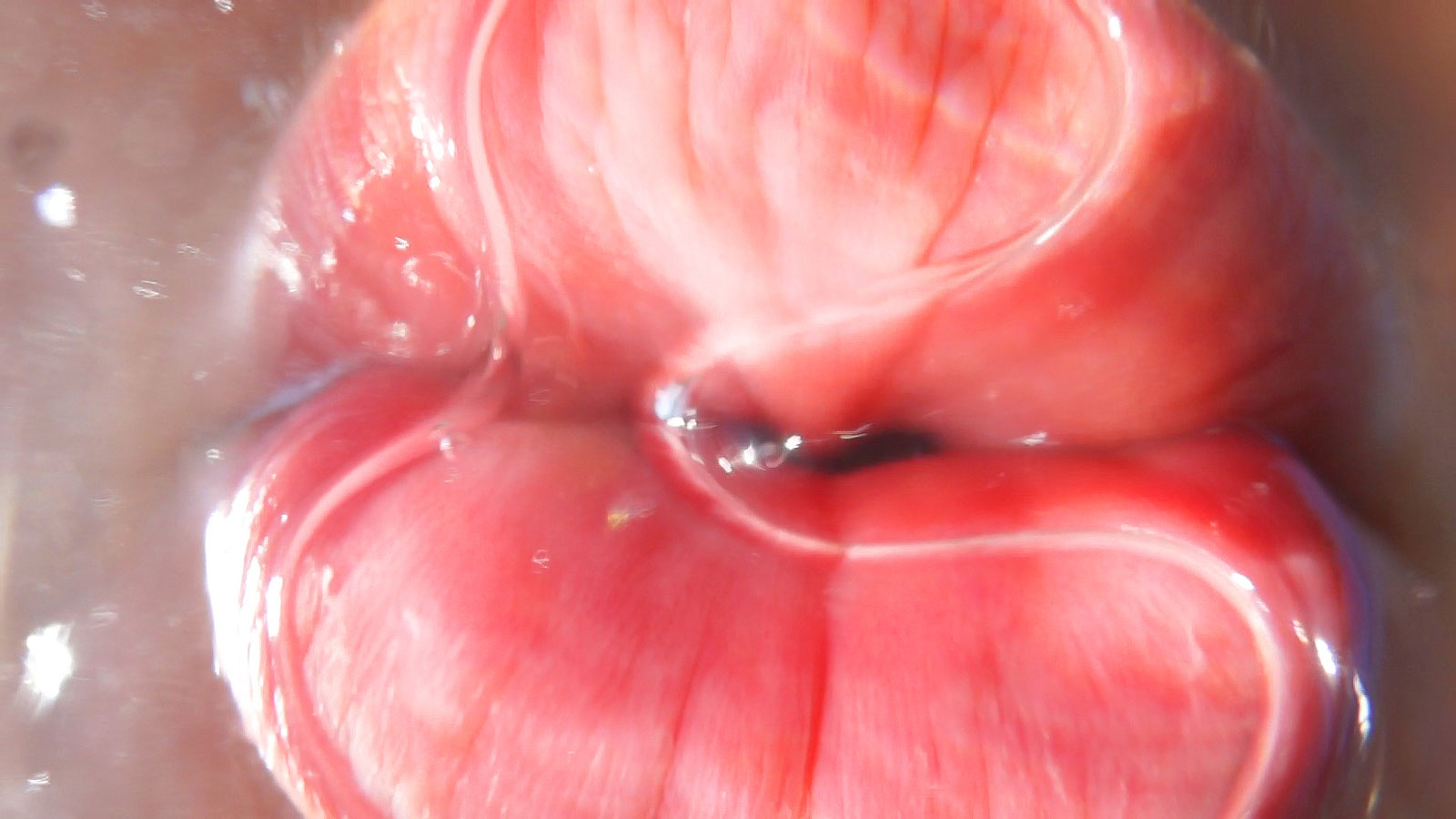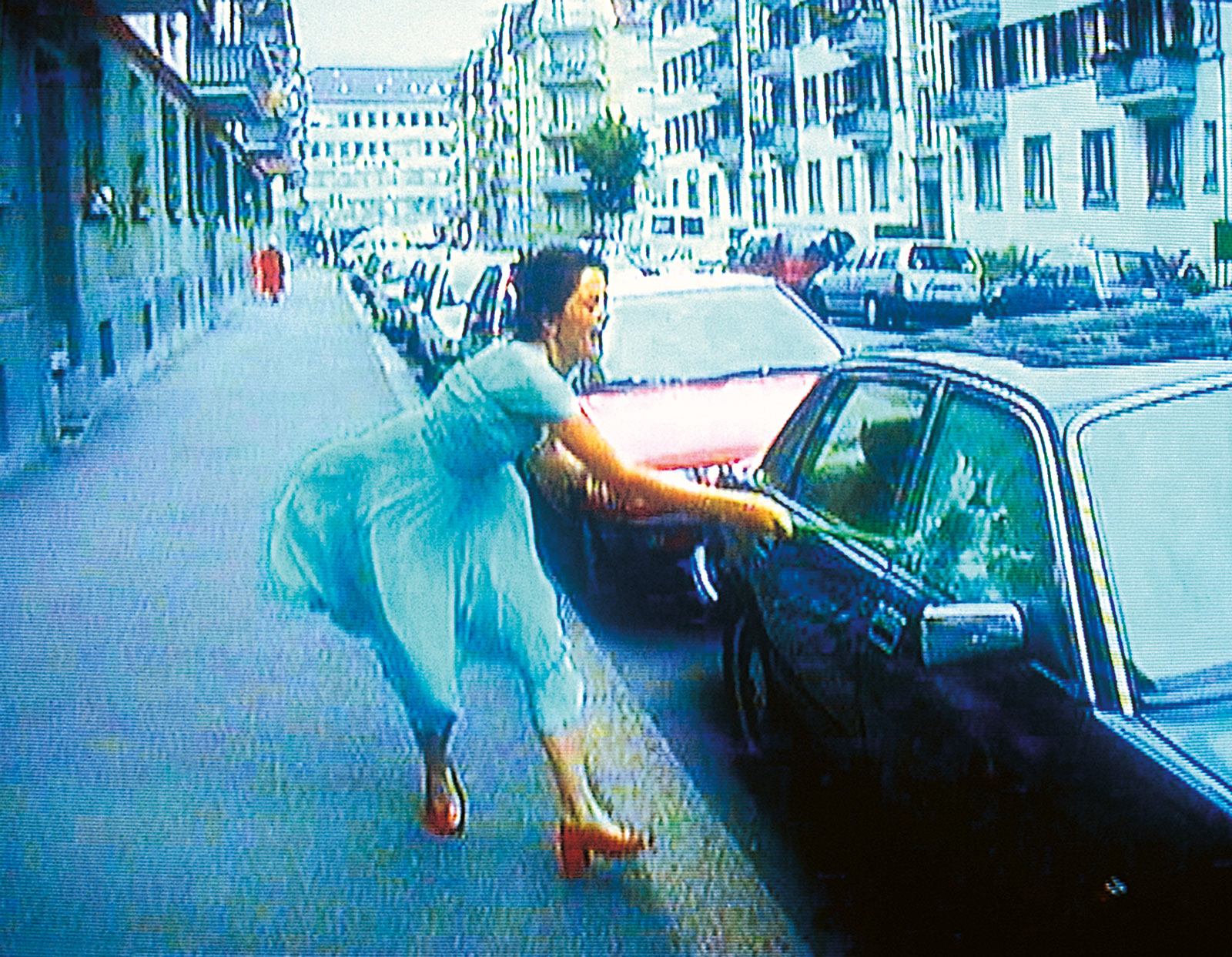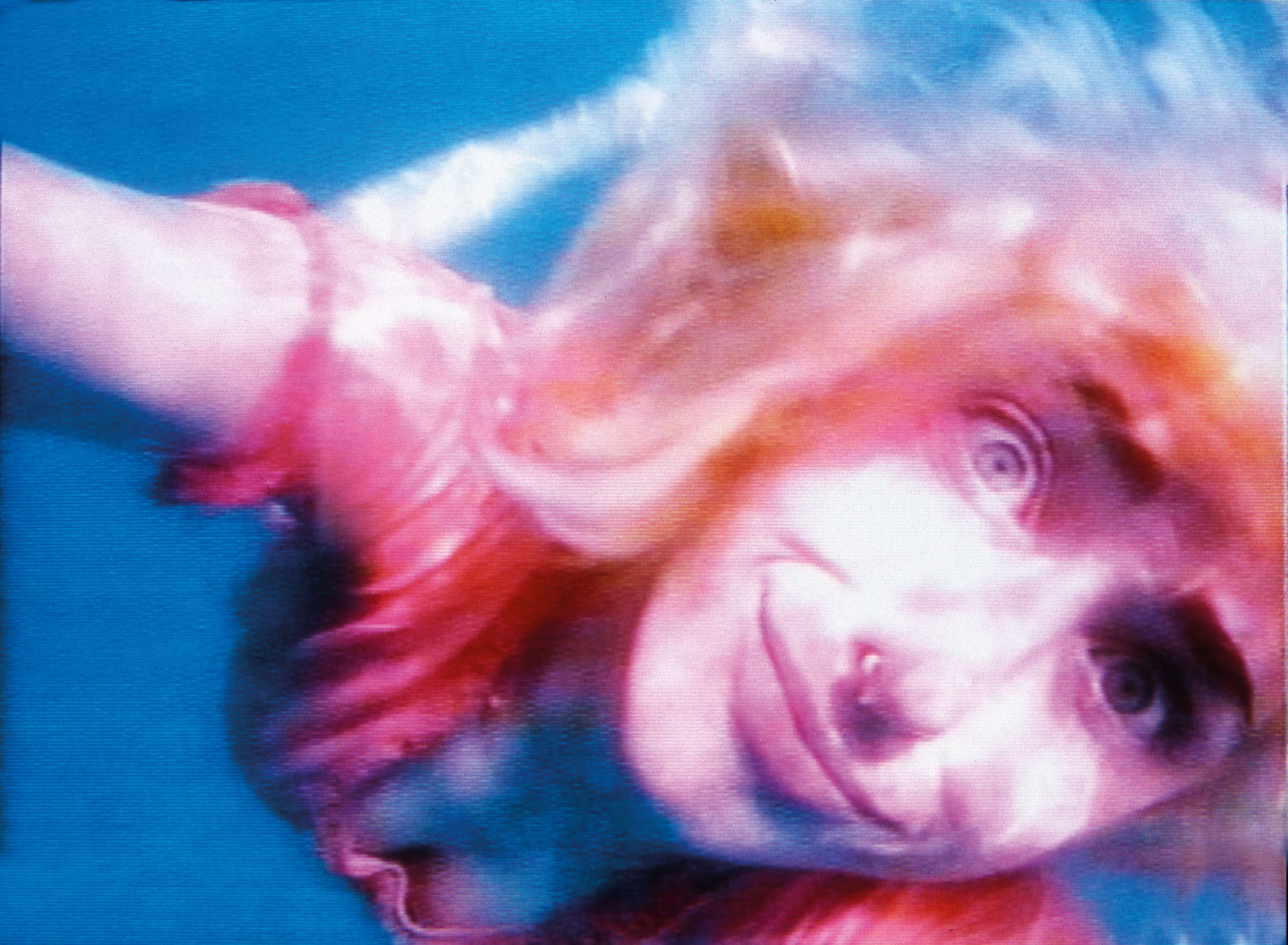If you’ve been watching the news as much as I have these past several months you might be forgiven for forgetting that video as a medium can do more than provide a platform for talking—if not ranting—heads. I nearly forgot myself. The large-scale exhibition on Swiss artist Pipilotti Rist at the New Museum reminded me in the most enjoyable way.
After a flurry of appearances in small venues in the late 1980s, the fifty-four-year-old Rist made her international exhibition debut in the Aperto or “Open” section of the 1993 Venice Biennale directed by Achille Bonito Oliva. Since then she has traveled the art world circuit like a blissed-out rider on a psychedelic merry-go-round, making herself a ubiquitous presence in museums, kunsthallen, biennials, and elsewhere, not least in a major atrium installation at the Museum of Modern Art in 2008-2009 and by the addition to MoMA’s permanent collection of her paradigmatically sybaritic video installation, Sip My Ocean (1996), which follows swimmers moving over clean sand through clear ocean waters to a soft music. Nevertheless this show, which occupies four floors, is the first New York survey of her work and it comes at an oddly critical time both for her and for her American audience.
In many ways Rist is a kind of lusty feminist flower-child—her first name is an invented combination of Pippi Longstocking and Rist’s own childhood nickname, Lotti—but of a generation that missed the first blush of those tendencies and so was in a position to look back on them critically. Raymond Pettibon, the punk Goya of the post-Haight-Ashbury–post-Altamont counter-Counter-Culture, and his polymathic, multimedia pal Mike Kelley both turned jaundiced eyes on the giddy spirit of the 1960s in their indictments of the periods Utopian fantasies. In striking contrast, Rist’s approach has been to embrace such idealism without any apparent cynicism. Over many years, she has deployed a sensual ethos and aesthetic with a robustness and invention that persuades one not only of her sincerity but of the abiding worth of such optimism.
I write this as a sixty-seven-year-old ’68er who has smoked my share of dope, lounged around my share of crash pads watching light shows, and communed with my share of kindred, soul-searching spirits. I don’t really hunger for more and certainly have no desire to relive the past. Accordingly it was with considerable wariness that I exited the elevator on the top floor of the New Museum to find a dimmed chamber scattered with beds of every description—from standard issue IKEA to faux-Rococo sleighs—on which members of the public stretched out to watch two videos projected on a ceiling framed by curvaceous Plexiglass cutouts.
Like several other tapes, the video images could have been outtakes from what one might call Life Aquatic with Pipilotti Rist. In this instance—To Mildness (2016)—they consist of complex digital montages of multiple views of plant growth just above and below the waterline of a calm lake or pond suffused with multicolored organic matter and occasionally disturbed by body parts bobbing or plowing through this wetlands flora; hands, feet, faces, and one enormous, Moby-Dick-like breast. All of these clips, which also include extreme, subtly disorienting close-ups—the breast—and the clever superposition of spatially inverted or tilted glimpses of the bubbling surface of the same lake or pond, plus periodic bursts of mud or seeds or natural powders. They are accompanied by audio of a woman who intones “when I was a child” and then sings about being pushed “in my neck, in my chest, in my waist, in my butt.” As annoyingly unintelligible as the libretto was much of the time, in short order my resistance to these sights and sounds gave way to an attentive surrender to the lulling amniotic flux of a liquid universe, and the subdued murmur of the recorded words emanating from another dimension.
On the back stairs between the fourth and third floors a hand-held screen shows naked beauties scream gleefully from what seem to be the pits of Hell—Selfless in the Bath of Lava (Bastard Version) (1994); somersault head over heels, displaying in other extreme close-ups an open rouged mouth and tongue at one end and a puckered, roseate anus at the other—Mutaflor (1996); and engage in extended foreplay with a naked man, though for a while both he and she wear briefs made of green turf—Japsen (1988). The biggest installation of those anchoring the exhibition, Pixelworld (Pixel Forest) (2016), consists of a full floor dimly illuminated by hanging chains of electric fixtures that blush rose, pale yellow, orange and pale blue and are encased in plastic shells complemented by scattered pillows on the floor. Like Olafur Eliasson in his 2003 Weather Project in the Tate Modern’s Turbine, Rist offers a soothing environment in which to move back and forth between paying attention to high impact imagery and letting one’s mind wander, though she does the courtesy of providing spectators with a cushion to settle into. And like Eliasson’s, Rist’s effect is very “Back to the Sixties,” but by means unavailable in those days and therefore not merely a restyling of a previous aesthetic.
Advertisement
On the third floor the video centerpiece composed of Mercy Garden phased into Worry Will Vanish Horizon (both 2014) can be watched where two giant wall projections converge in the corner. In one sequence that convergence allows Rist to create the impression that the supine spectator is constantly rising above and falling below the surface of the water, while various other sequences make the viewer feel as if he were groping through sunflower stalks, hurtling through rural landscapes, parting seaweed while swimming under water, and tracking laundry lines against a big sky. During one of these excursions more limbs and briefly a wrinkled uncut phallus resembling a sea worm come and go to the rhythm of plucked banjos and guitars. Throughout, Rist’s video sleight of hand paradoxically renders a tactile, olfactory reality in hypnotically optical terms.
The environments on the top two floors are the main events of the exhibition, added to which are several viewing booths with continuously streaming one-channel videos of varying degrees of distinction in the predominantly mellow, nature-loving idiom of her oeuvre overall. Again and again we are invited to look at the world from a shameless female gaze; and again and again we—men and women alike—do just that with telltale smiles or giggles or staring fixity bespeaking significant differences among us in a way that a comparable audience watching similarly charged movies in a darkened theater would not display to one another. Rist’s is an inherently benevolent social art. Her most overtly political gesture thus far has been her contribution to the 2005 Venice Biennale, Homo Sapiens Sapiens. For it she projected a swarm of kaleidoscopic nudes onto the ceiling of the deconsecrated Church of Saint Stae and provided mattresses so that the public could enjoy this orgiastic video substitute for a pagan fresco in almost Roman comfort.
The two signal exceptions to the prevailing methods and mood of the works just described are to be found in Ever Is Over All (1997)—which in the New Museum’s presentation is looped with Sip My Ocean—and Suburb Brain (1999). The ensemble subsuming the latter piece, Rist’s only full blown foray into three-dimensional sculptural installation, incorporates a wall covered with low relief casts of packaging materials such as the specially molded Styrofoam insulation for shipping boxes—The Innocent Collection (1985-ongoing)—and Suburb Brain, a scale model of a suburban street, a track house whose windows are screens that offer a glimpse into the interior, where, among other things, a family sits down to a meal with flaming plates, and an outbuilding where other screens flicker and flash. Projected on the wall next to these structures, are scenes of a middle-aged woman driving with a friend, to whom she delivers a monologue combining New Age psychobabble and several pithy observations about the impossibility of domestic bliss, among them “we rot together in pairs”—or words to that effect.
Ever Is Over All is by comparison exuberantly, anarchistically feminist: a radiant, laughing, anti-bourgeois Venus strides the sidewalk holding a decidedly phallic tropical flower with a long stem, stopping from time to time to swing it like a baseball bat to smash the windows of cars parked along her path. Behind her appears a police officer, but rather than chasing her down the street, the cop—also a smiling woman—salutes her when they come abreast of each other and then moves on. With that, Rist’s protagonist resumes her romp/rampage. It is the most joyful call to arms I’ve witnessed in a long time. Yet set as it is in an immaculate and decorous Northern European city, it strikes my New York eye as pure fantasy, and as far from Lizzie Borden’s gritty Reagan-era feminist guerrilla video Born in Flames (1983) as one could get. Incidentally, Beyoncé has covered Rist’s original for the music video released with her new hit single Hold Up, but replaces the flower with a baseball bat, adds a killer wardrobe with lots of cleavage, a host of bit players, multiple targets other than car windows, multiple explosions, boom shots, and much else. It is like watching a stripped down nouvelle vague movie of the 1960s remade by Steven Spielberg, with contemporary film industry production values effectively substituted for the spirit of make-it-up-as-you-go anarchy.
Advertisement
Deploying relatively simple special effects—digitally increasing contrasts and denaturing color, dropping out shadows or increasing highlights to the point that forms break up—in support of medium-tech strategies involving montage, mirroring, and uncanny juxtaposition, Rist has conjured a pantheistic pleasure dome. At its least effective, it’s an approach that resembles high-end music videos; but sometimes it is almost capable of putting the mess we are in out of mind. On departing the New Museum, as when leaving an art-house movie theater in years gone by, the glow of Rist’s work lasts for long enough to briefly re-enchant you. But don’t try smashing car windows with exotic blossoms. In the new reality the cop following you won’t be smiling.
“Pipilotti Rist: Pixel Forest” is at the New Museum through January 15.


